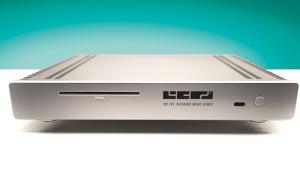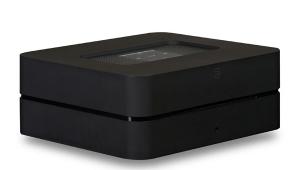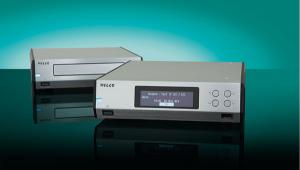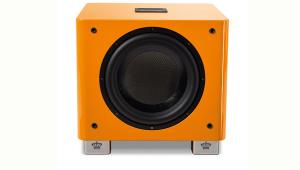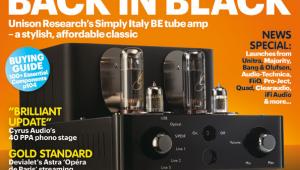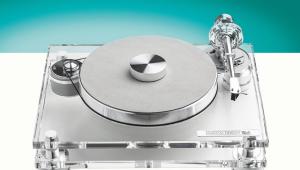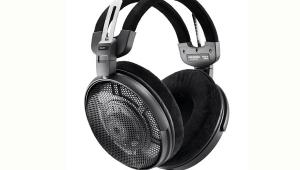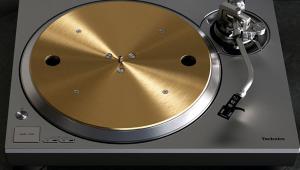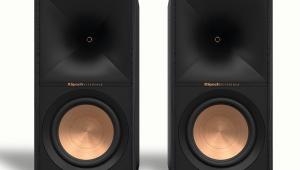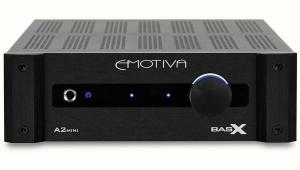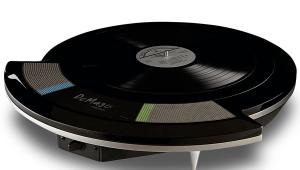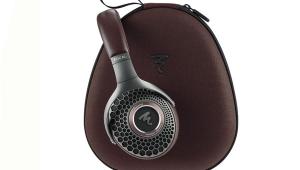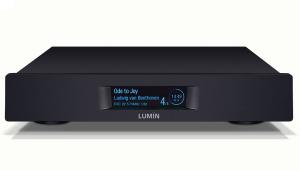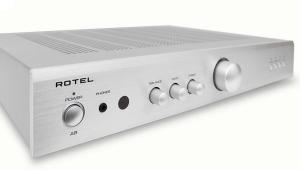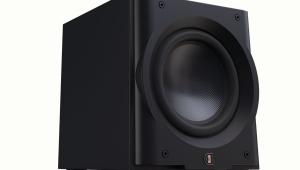Innuos Zenith Mk3
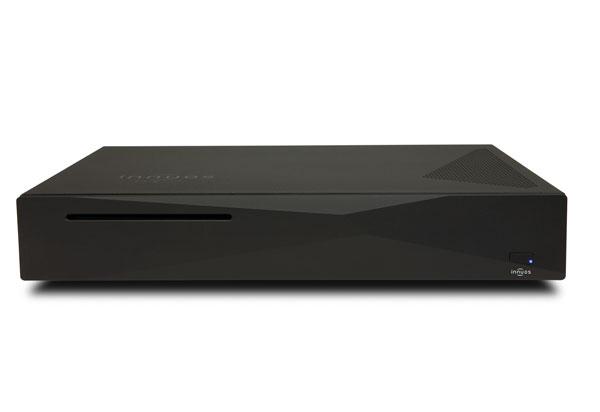
 Dedicated servers designed especially for audiophile music storage have taken off in popularity in recent years and despite a healthy degree of scepticism, there’s a strong argument for high-quality digital library storage. Founded in 2009, Innuos was one of the earliest arrivals in the sector and has been steadily improving and expanding its models to Mk3 status of late except, that is, for its flagship Statement priced from £9,800. The Zenith sits directly below this model and takes the same basic chassis as its more affordable HDD-equipped Zen series, but with upgraded components in the pursuit of higher performance.
Dedicated servers designed especially for audiophile music storage have taken off in popularity in recent years and despite a healthy degree of scepticism, there’s a strong argument for high-quality digital library storage. Founded in 2009, Innuos was one of the earliest arrivals in the sector and has been steadily improving and expanding its models to Mk3 status of late except, that is, for its flagship Statement priced from £9,800. The Zenith sits directly below this model and takes the same basic chassis as its more affordable HDD-equipped Zen series, but with upgraded components in the pursuit of higher performance.
The drive options fitted to the Zenith are all solid state in order to reduce the amount of mechanical noise that’s present in the chassis – something that Innuos works further to reduce by using a mechanical damping system in the drive mounting. Other interesting touches include the three (very good quality) feet placed asymmetrically underneath the chassis to prevent vibrations from being transmitted.
The other area where the Zenith differs from more affordable designs is the power supply. This is a triple linear type with some high-quality components used throughout including low noise regulators and Mundorf capacitors. Innuos says that a good deal of the design thinking in this power supply is taken from its aforementioned Statement design, which uses a dedicated chassis for its range-toping unit. In use, the Zenith’s own power supply arrangement generates some heat and so the top of the unit sports a ventilation grille.
The server hardware of the Zenith Mk3 is built around 8GB of RAM and an Intel Quad Core CPU. It includes twin Ethernet ports, one for it to communicate with the network and the other to act as a dedicated output to a music player. The platform is Linux and the Zenith Mk3 utilises a version of Logitech’s Media Server software, which is reliable and effective. If you wish to use the USB audio out to a DAC, though, you’ll need a compatible app to do so.
For Roon music management software users, the Zenith Mk3 can be configured as a Roon Core. You can install Roon directly and proceed to output via the Ethernet port to other Roon-compatible products or via USB to a DAC – bypassing the need for a Logitech Media Server app altogether. Compared with a dedicated Roon server like the £2,500 Nucleus+ (HFC 439), upsampling and EQ settings are limited by the onboard processing that’s available, but it still imbues the Innuos with considerable flexibility above and beyond most rivals.
The Zenith Mk3’s flexibility is augmented by the front panel’s slot-loading CD mechanism that rips directly to the hard drive. A user-friendly web browser interface allows you to edit album data and perform basic management from a phone or tablet on the same network, making it easy to tweak and configure.
It is well produced, too. The metal casework is solid and well finished and little touches like being able to adjust the colour of the front panel LED to fit in with other displays in your setup adds to the feeling of a high-quality product. This is just as well as the Innuos certainly isn’t cheap with prices starting at £2,999 for models fitted with a 1TB storage drive, while the 2TB drive of the review sample costs £3,499 and the maximum capacity 4TB version increases the price to £3,999.
The Innuos is utterly stable under test, but I can’t help but think that the reassurance of a front panel display or at-a-glance status would make diagnosing any potential issues easier. Ignoring the Roon section initially and populating the server with a 400GB library, all the promised flexibility offered by the web interface is delivered on. So long as you check the instructions and ensure that you drop your content into the ‘Quick Import’ folder, the Zenith Mk3 will perform the task of turning it into a functional library in a swift manner, but telling it to check all metadata against an online database slows down the process. Ripping content via the CD drive is straightforward and results are accurately tagged.
Connecting Naim’s Uniti Nova all-in-one music streaming system to the player Ethernet port results in an immediate and stable connection. None of the Naim’s features that require access to the outside word to connect with cloud-based streaming services such as Tidal or internet radio are affected. My music library is rendered correctly and gives slick access so I can flit around making rapid playback or search field changes without any delay.
Sound quality
Sonically, the Innuos does little to alter my view that components such as this are directed at incrementally improving a system that you are already happy with. Nonetheless, there are some subtle differences noticeable when switching between the Zenith and the same library on my older Melco N1A 4TB NAS drive (HFC 397). The superbly recorded 24/88.2 version of Dead Can Dance’s Toward The Within has a wonderful three dimensionality to it and the Zenith Mk3 does a fractionally better job of capturing the feeling of the theatre the band is performing in and the space that’s between and around them on the stage.
If it doesn’t quite deliver night-and-day differences when running as a conventional server, the effects via the USB connection are far more perceivable and dramatic. Using the iPeng Logitech Media Server app, the same files running into a Chord Electronics Hugo 2 DAC (HFC 428) feel dynamic and extremely real, thanks in part to an imperceptibly low noise floor.
The 16/44.1 rip of Bloc Party’s Luno has an urgency that feels heightened by the Innuos. Almost all high-specification servers will demonstrate their biggest gains via the USB connection, but the Zenith might be the most pronounced that I’m yet to experience. Given that it is also possible to power a device like the Hugo 2 DAC from the back-up USB port at the rear of the Zenith, it makes for a neat installation, too.
Switching over to Roon only heightens this feeling. Via Naim’s Uniti Nova, there are some serious gains to the quality of the interface – thanks to that superb integration with streaming services – but the performance itself still feels largely governed by the Naim. Via the Chord (even with no upsampling engaged), the performance enjoys a further small uplift to the tonality that’s on offer. Applying a single routine of upsampling – so that 44.1kHz becomes 88.2kHz – also adds to the scale and separation and is well within the remit of the Innuos to deliver, even allowing for the reduced processing onboard.
Conclusion
The Zenith Mk3 delivers a potent and flexible spec with one of the best interfaces going and is compatible with Roon front ends. The price maybe high, but it delivers an outstanding performance that will inspire confidence even for those starting out in network audio, and so should be near the top of any shortlist. ES
DETAILS
Product: Innuos Zenith Mk3
Price: From £3,000
Origin: Portugal
Type: Music server
Weight: 9kg
Dimensions: (WxHxD) 420 x 70 x 320mm
FEATURES
● Up to 4TB SSD storage
● CD drive for ripping
● Connections: 2x Ethernet ports; 2x USB-A ports
● Roon Core compatible
 |
Inside this month's issue:
Ruark R610 music system and Sabre-R standmount speakers, PMC twenty.23i Active, floorstanders, English Acoustics Downton preamplifier, Bluesound NODE ICON preamp/streamer, Ortofon Concorde Music Blue MM cartridge and much, much more
|
